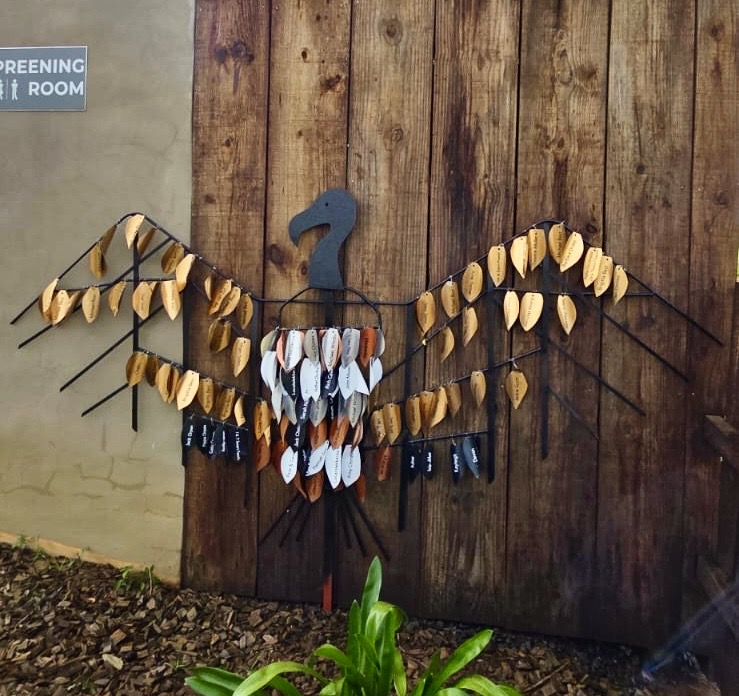Situated in Zululand, Northern KwaZulu-Natal, Somkhanda Game Reserve was the first Community Game Reserve to welcome a black rhino population as part of WWF’s Black Rhino Range Expansion Project (BRREP) in 2007.
This latest dehorning operation marks a significant success, not only for the reserve, but for overall rhino conservation in the KwaZulu-Natal province, which lost an alarming 325 rhinos to poaching in 2023.

A collaborative effort
The July three-day dehorning operation on Somkhanda Game Reserve, funded by Rhino Recovery Fund and others, is the latest in a series of operations supported by various donors, aimed at protecting this rhino population following a substantial increase in poaching numbers in KwaZulu-Natal in 2023.
A number of key partners were involved in making the operation a success, including Wildlife ACT, PAMCo, Ezemvelo KZN Wildlife veterinarian Dr Rowan Leeming, African Wildlife Vets veterinarian Dr Jen Lawrence, Heligistix, Zululand Air Patrol (ZAP Wing), Rhino Recovery Fund, CHEP, Protank, WWF Black Rhino Range Expansion Project, Ford Wildlife Foundation, and Somkhanda Big 5 Tourism.
Meiring Prinsloo, MD of Somkhanda, says: “Due to the increased rhino poaching pressure experienced in KZN during the past few months, we had to drastically intensify our overall counter poaching measures. This obviously comes at increased, and mostly unplanned, additional costs. Thanks to the Rhino Recovery Fund and Wildlife ACT, additional support was made available to Somkhanda Game Reserve that will definitely aid us in our mission to safeguard our rhino and other wildlife.”
A necessary preventative measure

Dehorning is the process where the majority of a rhino’s horns are carefully removed by an
experienced veterinarian in a safe and humane manner while the animal is sedated. This procedure is painless for the rhino with the aim to reduce the weight and, as a result, the value of the rhino’s horns thus reducing the incentive for a poacher.
The decision to dehorn is not made lightly and is implemented as a life-saving relief response to the onslaught of poaching the province has suffered, with the ultimate well-being of the individuals and the conservation of their species as the driving force.
Poaching has had a significant impact on rhino numbers, with some of the smaller populations having been wiped out entirely and larger populations now facing strain on a disastrous level. This has resulted in dehorning becoming a vital preventative conservation measure for these iconic species.
The importance of monitoring rhino populations
Monitoring rhino populations is essential as it allows for their health, behaviour, and population dynamics to be tracked, which promotes effective management and protection strategies. Additionally, monitoring assists in detecting and preventing poaching activities.
On Somkhanda Game Reserve, a two-fold approach has been adopted in order to maximise the effectiveness of wildlife monitoring. Firstly, daily on-the-ground tracking by Somkhanda’s experienced rhino monitors who go out on foot to find and report on the reserve’s rhino population, gathering information on the condition of individuals, population demographics, feeding, and breeding behaviour.
The second approach is using modern remote tracking technology which has been implemented in collaboration with Wildlife ACT. These tracking devices assist in tracking a rhino’s movement patterns, allowing teams to respond quickly if there are irregularities.

“In order to protect a species like rhino effectively, reserve management needs to know as much information about them as possible, be it population size, population demographics, movement patterns, territories, the condition of individuals, and more,” explains Wildlife ACT Conservation Coordinator, Chris du Toit.
“Intensive, on the ground monitoring along with the use of technology such as tracking devices helps to gather this vital information more effectively, which is then used to make informed management decisions to better protect these vulnerable animals.”
Additional measures taken

Excitingly, with the specific support of Rhino Recovery Fund, a solar-powered LoRaWAN system has been installed on the reserve, which is providing coverage to the majority of the reserve. This coverage is primarily focused on areas with high rhino densities, and has hugely improved the reserve’s rhino monitoring capacity.
Wildlife ACT fitted key individuals with LoRa tracking pods during the dehorning process. These devices connect and send GPS points through the LoRaWAN system, allowing the team to check their locations remotely.
The rhino dehorning undertaken on Somkhanda Game Reserve has shown just how much collaboration is needed to protect and preserve this iconic African species. All remain positive that the spirit of conservation’s hard workers will prevail as KwaZulu-Natal’s rhino population continues to face the severe threat of poaching.
Photos: Megan Whittington / Wildlife ACT



.jpg)


.jpg)



